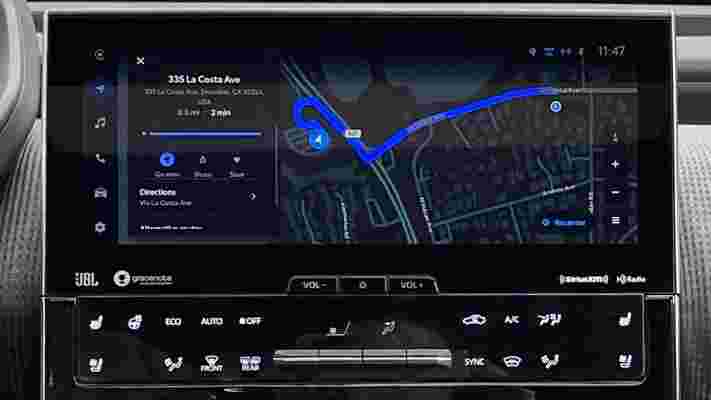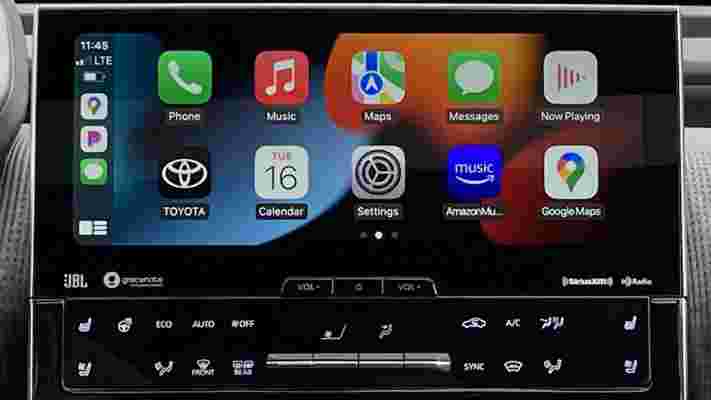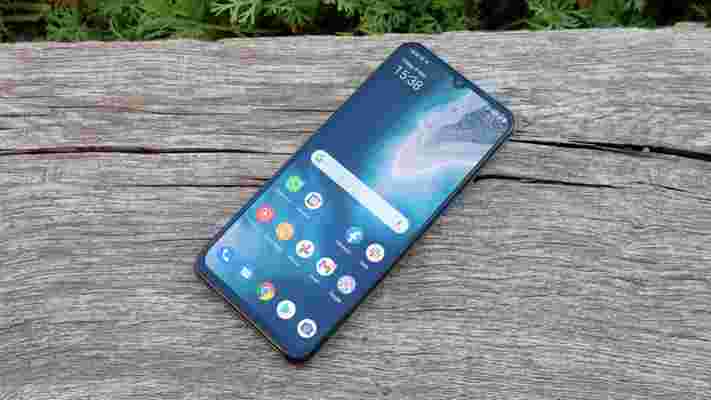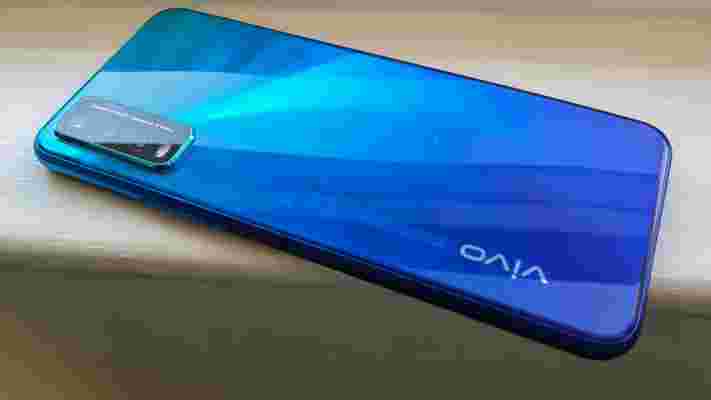Developer Naughty Dog has said it may return to the Uncharted series and hasn’t ruled out the possibility of developing Uncharted 5.
In the lead-up to the release of the Uncharted: Legacy of Thieves Collection , GamesRadar spoke to Shaun Escayg, creative director on Uncharted: The Lost Legacy and cinematic animator on Uncharted 4: A Thief’s End, about the upcoming title.
Asked about the future of the franchise, Margenau said the possibility of Naughty Dog making another Uncharted game was still alive. "I think we can say for certain that we can never say never,” Escayg said.
“Uncharted is a franchise we love – that the studio loves. I love, and Kurt loves. It's a world we want to see more of. So I can certainly say that,” he added. The last mainline game to release in the series was 2016’s Uncharted 4: A Thief’s End, followed by the standalone expansion Lost Legacy the year after.
Alongside the Legacy of Thieves Collection, which ports Uncharted 4 and Lost Legacy to PS5 and PC, the next installment in the franchise is the Uncharted film, starring Tom Holland and Mark Wahlberg.
Analysis: Uncharted without Nathan Drake

It would be tempting to think Naughty Dog has moved on from Uncharted. Over four years since the release of the series’ last installment, and with the roaring success of The Last of Us still echoing in the ears of eager fans, Nathan Drake’s treasure-hunting escapades could well be a thing of the past. After all, series creator Amy Hennig left Naughty Dog back in 2014, and no future releases in the series have been teased by Sony.
Although Escayg’s comments to GamesRadar don’t suggest anything concrete, they make clear that Naughty Dog remains open to developing future Uncharted titles. With protagonist Nathan Drake’s storyline fittingly wrapped up in Uncharted 4, it wouldn’t be surprising if any future games centered on one or more secondary characters, much like Lost Legacy did.
There are plenty to choose from. Alongside Lost Legacy's Chloe Frazer and Nadine Ross, Drake's business partner Sully and his brother Sam make for fitting protagonists, and even team up at the end of the fourth game.
Don’t be expecting a new Uncharted game soon, though. With the film releasing soon on the big screen, publisher Sony might be poised to let the franchise’s extended material do most of the money-making legwork, while Naughty Dog pursues other creative video game projects on the small screen and, likely, gets to work on The Last of Us 3 .
We used Toyota's new infotainment system in the bZ4X and it's a huge improvement
Late last year, we got the chance to see – but not drive – Toyota's new bZ4X battery-electric crossover in person. We also took the upcoming 2022 Tundra hybrid for a brief spin.
What do these two vehicles have in common? Both feature Toyota's new infotainment system, which is also found in the 2022 Lexus NX. Considering Toyota's current infotainment system dates from the paleolithic era, this is a welcome change.
We sat down with Chris Pedregon, Communications Lead, Connected Technologies for Toyota, who walked us through the bZ4X's infotainment system.
Instead of being spearheaded in Japan, like previous infotainment systems, this new infotainment system was developed entirely in-house by Toyota Motors North America's Connected Technologies group to "exceed customer needs and deliver amazing and personal connected experiences" according to the brand .
Standard on the new bZ4X EV
As a quick refresher, the bZ4X is Toyota's first battery EV since the RAV4 EV compliance car back in 2014. It shares almost its entire design with Subaru's Solterra battery-electric crossover, and represents Toyota's first attempt to take battery EVs seriously after years of betting on hydrogen fuel-cell and plug-in hybrid vehicles.
While the bZ4X is built on a bespoke battery EV platform (e-TNGA), it looks and feels a lot like the RAV4.
In fact Toyota's making sure not to step on the toes of its best-selling ICE crossover, with the 302hp RAV4 Prime plug-in hybrid still being faster, thanks to a 0-60mph sprint in 5.7 seconds.
The bZ4X will come in two flavors: a 201hp single motor configuration (FWD) with estimated range of 311 miles (500km) and a 215hp dual motor model (AWD) with an estimated range of 286 miles (460km). Neither will reach 60mph in less than 7.5 seconds.
Both versions feature a 72KWh battery and support 150KW DC fast charging. And while the bZ4X's pricing hasn't been finalized yet, it's clearly competing more with VW's entry-level ID.4 than the Ford Mustang Mach-E or Tesla Model Y in terms of specs and performance.
In other words, these are baby steps for Toyota. Our brief time with the bZ4X confirmed that this EV doesn't push the envelope apart from the infotainment system.
Choose your size, all come fully connected
Toyota's new infotainment is built around completely new hardware and software. In the bZ4X, it uses a 12-inch touchscreen, but other display sizes include 8, 10, and 14 inches (Tundra and Lexus NX, depending on trim).
Regardless of display size, you get a bright, high-resolution, glass-bonded, capacitive touchscreen, and the same quick and responsive user interface – thanks to significantly more processing power than before.
While it's unclear what kind of processing hardware Toyota is using here, connectivity is integral to this new infotainment system, with built-in WiFi and 4G support for hotspot functionality and OTA (over-the-air) software updates.
In addition, two phones can be connected via Bluetooth simultaneously, making it easy for the driver and front passenger to seamlessly take calls or play media from their handsets – no switching required.
The home screen has been kicked out
One way this new infotainment system stands out is that it lacks a home screen. Toyota is using a "one step away" approach with a persistent vertical icon bar on the left side of the display.
It lets the user switch between various interface screens, including navigation, media, phone, car, settings, and Apple CarPlay / Android Auto (when available). This, Toyota claims, makes for a simpler and more intuitive user experience.
This new infotainment system also makes ample use of whitespace and large, legible fonts. As such, the user interface feels light and airy, making it more welcoming – though we found the color scheme a little too monochromatic and dull for our tastes.
Then again, Toyota is touting a "voice first" approach here, and believes most users will navigate this new infotainment system using the new "Hey Toyota" intelligent voice assistant.
"Hey Toyota"

First, this new "Hey Toyota" voice assistant is able to understand natural language and context. Second, it uses microphones above each front seat to determine whether the driver or front passenger is speaking.
For example, if you say "hey Toyota, I feel like coffee", you'll get a list of nearby coffee shops to choose from. But if you say "show me the nearest charging station", you'll be offered a single location to navigate to.
In our brief time using the new infotainment system, we found this new voice assistant worked reasonably well, though it's not quite as refined as Siri or Alexa, and definitely not as advanced as Google Assistant.
Basically, it gets the job done, but it's not nearly as sophisticated as the voice assistants we're all familiar with. Still, this intelligent voice assistant is a major upgrade, and one of the better ones we've used in a car to date.
Toyota's new infotainment system also features user profiles which allow you to carry your settings – from preferred media and radio stations to climate settings in some models – across multiple vehicles.
User profiles live in the cloud, and can be paired with individual key fobs or digital (smartphone-based) keys via the Toyota app. You can also login to your user profile using the infotainment system directly.
Plays nice with Google, Apple and Amazon

As we previously mentioned, this new infotainment system was designed from the ground up around connectivity. It uses Google's cloud services for real-time navigation, traffic, and POI (points-of-interest), and includes an offline mode that caches this data in advance in areas of poor connectivity.
It even inherits other features from Google Maps, like two-finger swiping for a 3D view, and ETA sharing via text message.
Other cloud services include Apple Music and Amazon Music, which are both linked to your user profile. Basically, you login to one or both music services inside the Toyota app, which then follow your user profile from vehicle to vehicle – no phone required.
It's a pretty clever setup. Unfortunately, Spotify and YouTube Music are missing here, and it's unclear if Toyota plans to add these music services in the future.
Of course, in addition to Bluetooth connectivity, FM and AM (terrestrial) radio, and SiriusXM (satellite) radio, Toyota's new infotainment system also supports wireless (and wired) Apple CarPlay and Android Auto.
Ultimately, while this new infotainment system isn't breaking any major new ground, it's a huge improvement over Toyota's previous efforts. We're looking forward to spending more time with it when we review the bZ4X.
What are Vivo phones? A brief overview of the company and its smartphones
While Vivo is one of the smaller Chinese phone brands that releases its phones in the West, it's put out a few impressive Android phones, so we're expecting big things from the company in the future.
We’ve now seen a number of Chinese phone brands make it big outside Asia by offering high-spec phones at low prices, and Vivo could be set to follow the same path. In a few years, you could see Vivo phones sitting on store shelves next to Samsung Galaxy and Apple iPhones.
In this guide to Vivo, we look at the company’s history, the phones it makes, and where it stands with regards to non-smartphone devices too.
A brief history of Vivo
Vivo was founded in 2009, selling its phones in only China for a time. This changed in 2014, when the company extended its reach to a few more countries, predominantly in South Asia. The brand released its first smartphone in Europe in 2020, and now sells its devices in a few countries on the continent including the UK, France, Italy and Spain.
The company also has a presence in a few non-Eurasian countries – namely Colombia, Chile and Australia.
Alongside Realme, Oppo and OnePlus, Vivo is affiliated with tech conglomerate BBK Electronics, although the exact relationship between BBK’s brands has always been unclear.
In a statement, Vivo told TechRadar 'vivo is an independent company and does not belong to any parent company. We invest in our own R&D and product development resources, and do not share with any brand in both the software and hardware development.'
'In 2001, the three BBK business divisions parted to fully separate business entities/companies. BBK Communications became vivo'.
What phones does Vivo make?

Vivo’s flagship line of smartphones is the X range, with mobiles like the Vivo X60 . These phones feature top-end specs, but typically at mid-range prices. They often come with camera innovations such as a physical gimbal sensor on the main camera, for improved optical image stabilization.
In addition, Vivo has its Y-series of devices, such as the Y70 and Y20s . In general, these are dependable, low-cost devices. Higher numbers correlate to better specs and higher prices.
There's also the S- and V- line, which Vivo has been selling in China for just as long, but introduced in regions like Europe a little later. These, again, are mid-range or budget devices - there's actually little that differentiates the Y, S and V in terms of market placement.
The Vivo Apex smartphones are worth a look, too – although you can’t buy these handsets. They’re concept devices that Vivo launches annually, to show off tech that later trickles down into smartphones the company launches to market.
Vivo produces plenty of other phones that aren’t sold in all countries. Notable among these is iQOO, a line that’s dedicated to high performance (mainly for gaming), though it's been slowly introducing more and more lines to a global market since it started selling them.
Vivo phone availability information

At the time of writing, Vivo is still pretty new in Europe. As such, it’s difficult to specify release patterns for its phones in the region.
The first batch of Vivo’s phones were launched in Europe in October 2020, comprising the X51, Y70, Y20s and Y11s; the X51 had been launched earlier in the year elsewhere.
Since then, we've seen a slow drip of new phones over time, mostly budget versions. One factor that differentiates Vivo from other fresh-faced Chinese phone companies, is that it almost immediately started selling its mobiles via carriers, as some other brands sold their devices SIM-free for years before getting telecom companies to range them.
Vivo's focus is still China though, and it sometimes results in delayed launches elsewhere. The Vivo X60, one flagship from the company, saw a Chinese launch in December 2020 before rolling out to Europe throughout 2021. That gives a glimpse into its
Other tech Vivo sells
Alongside its range of smartphones, Vivo also sells audio devices such as the Vivo TWS Neo earbuds, which appear designed for use alongside the company’s phones.
In late-2020, the brand also unveiled the Vivo Watch – although it isn’t available in Europe, and there’s no word if it will appear, or whether we’ll be seeing more wearables from the company in the future.
It’s possible that, as Vivo expands, it could move into areas such as fitness trackers, tablets and even over-ear headphones – although that’s just speculation for now.